About the real Citadel
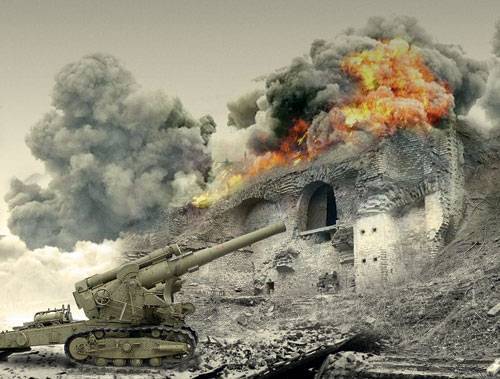
In connection with the Tsitadel of N. Mikhalkov in Tupecke, my VIFF posting 2004 was recalled about the storming of the citadel in Poznan. It described how the storming of the German fortresses really took place. Now I know about those events much more and I can even illustrate them.
To the question of whether I watched Tsitadel or not, I answered briefly: “there is a promotional video and a promotional photo, according to which viewers should make an impression and make a decision, after them I didn’t watch the film itself because it - a clear nonsense. " Due to the lack of any connection with reality.
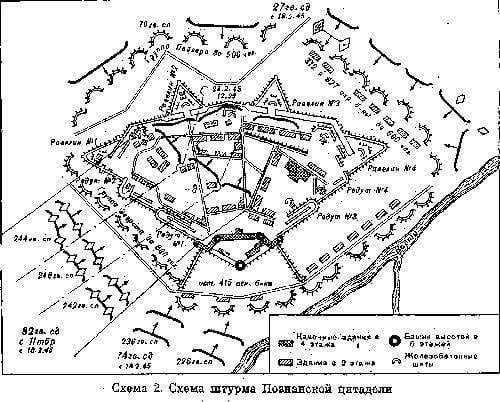
Artillery forced the fortress to dig into the ground. Therefore, the German forts and fortresses built in the second half of the XIX century barely towered above the ground. From a bird's eye view one of the remaining forts looks like this:
This is the fort Gorgast in the valley of the Oder, which was part of the fortress Kustrin. He was not stormed and he was well preserved.
Here are the gates of Fort Gorgast:
A low brick building, though a special brick.
But this is Poznan:
Low walls with embrasures. On top of the building are covered with stones and earth, which grew trees. This mound allowed the forts to withstand heavy fire mounted guns. Structures turned out to be "on the teeth" only howitzers caliber 280-305 mm. In Poznan, the maximum caliber was 280 mm, mortars Br-5, six pieces. With their help, part of the fortress’s casemates were piled up and silenced. The trees are bare not only because of the monstrous force of artillery fire, but also because of the time of year - Poznan was stormed in February 1945.
This is not “the clichés that have sunk to us for 50 years of Soviet cinema” (C) The great director (tm), this is reality.
The main problem during the storming of the forts and the citadel in Poznan were moats. Here is the moat of the Poznań citadel:
Sheer high walls with embrasures.
Here in this picture of one of the forts of Poznan it is better to see what threatened the attackers. Far away are the embrasures of a caponier extended into the moat:
People who fell into the ditch, no matter how many they were, would have been mowed down with machine-gun fire from embrasures of caponier and ravelins (protrusions into the ditch). Such a fort is not so difficult to attack with cuttings from shovels, with rifles and machine guns. Accordingly (I quote the description of the assault on the above link):
The engineer divisions attached to the assault detachments prepared assault ladders, fascines and ropes necessary for overcoming the moat. To dazzle the enemy's firing points in the fortress, before the sappers overcame it, several explosive charges weighing 250 kg each were prepared by sappers. For this purpose, iron barrels from under a fuel tank of 200 l, found in one of the previously captured buildings, were used.
Those. barrels were dumped into the ditch and a powerful blast deafened the Germans who were near embrasures. Wherever it was possible, the guns, which fired from the shaft at the embrasures of the caponiers, were taken out at a direct fire.
And here is an example of the "lead abominations of Stalinism and the truth of war" (C) Barin:
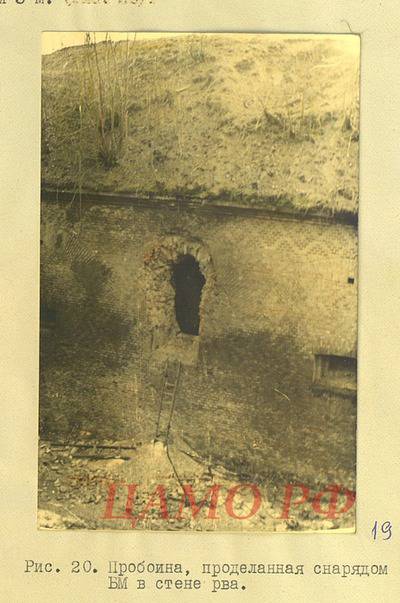
Even overcoming the moat did not promise quick success. Over the embankment on the other side of it, in the courtyard of the fortress, was the same picture - a vertical wall and many embrasures on all sides. Just jumping from the embankment into the courtyard of the fortress was suicidal. Therefore, within the walls of the citadel, heavy guns on direct fire broke through gaps. As we see this breach is punched by widening the embrasure, there is a whole embrasure next to it, you can estimate the amount of work.
Through the gaps along the ladders one could get inside. With the same breach, a breakthrough began inside the citadel with guns and tanks. It was expanded by detonation and a bridge was built to it across the moat. This allowed to shoot embrasures in the courtyard of the citadel of 45-mm and 76-mm guns, and then bring in even B-4 and flamethrower tanks.
"The mouse ran, waved its tail," and the tsitadel takes off into the air is generally laughter and tears. Here is how it happened in reality, the episode of the battle inside the citadel of Poznan:
"Taking advantage of the enemy fire from the redoubt №2 stopped, the Major Repin sent a flamethrower 2 ShISBr Guard Junior Sergeant Serbiladze to the redoubt with the task set fire to the inside through the loopholes and entrance. Flamethrower Serbiladze releasing 2 line of backpack flamethrower loopholes in the race 10 meters , set fire to a redoubt. The defended garrison did not manage to jump out of the redoubt, since an explosion of ammunition inside the redoubt immediately followed a large force. "
In the redoubt they stored the faustprony and they burned and exploded for another 36 hours. The loss of a large warehouse was one of the reasons for the surrender of the garrison.
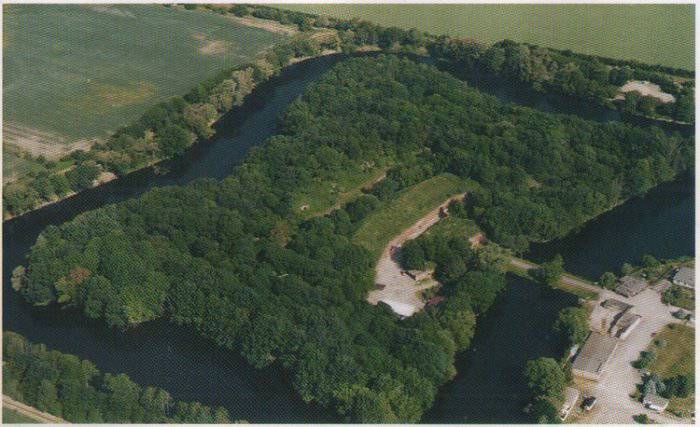
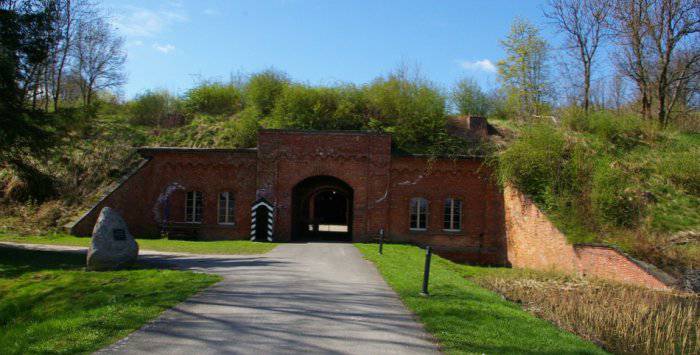
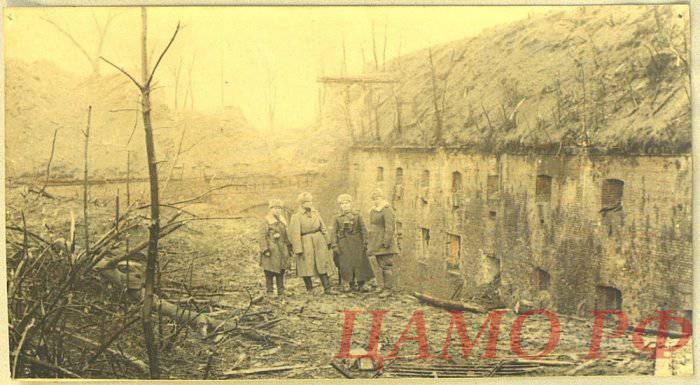
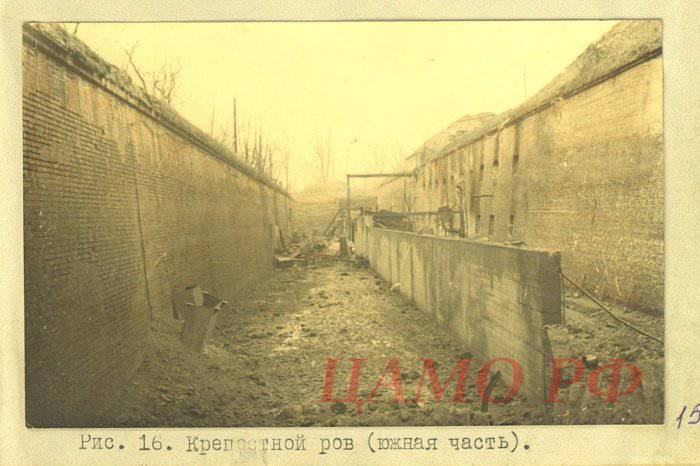
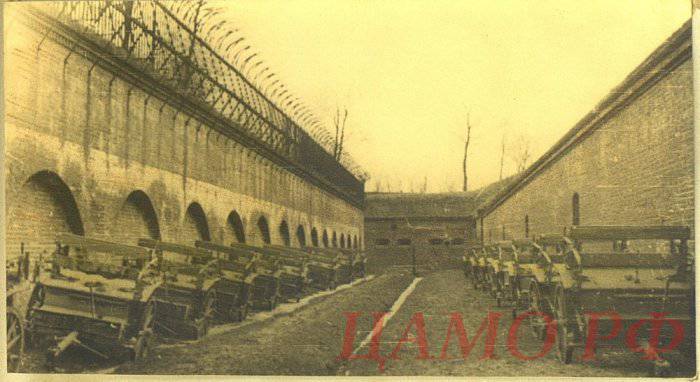
Information